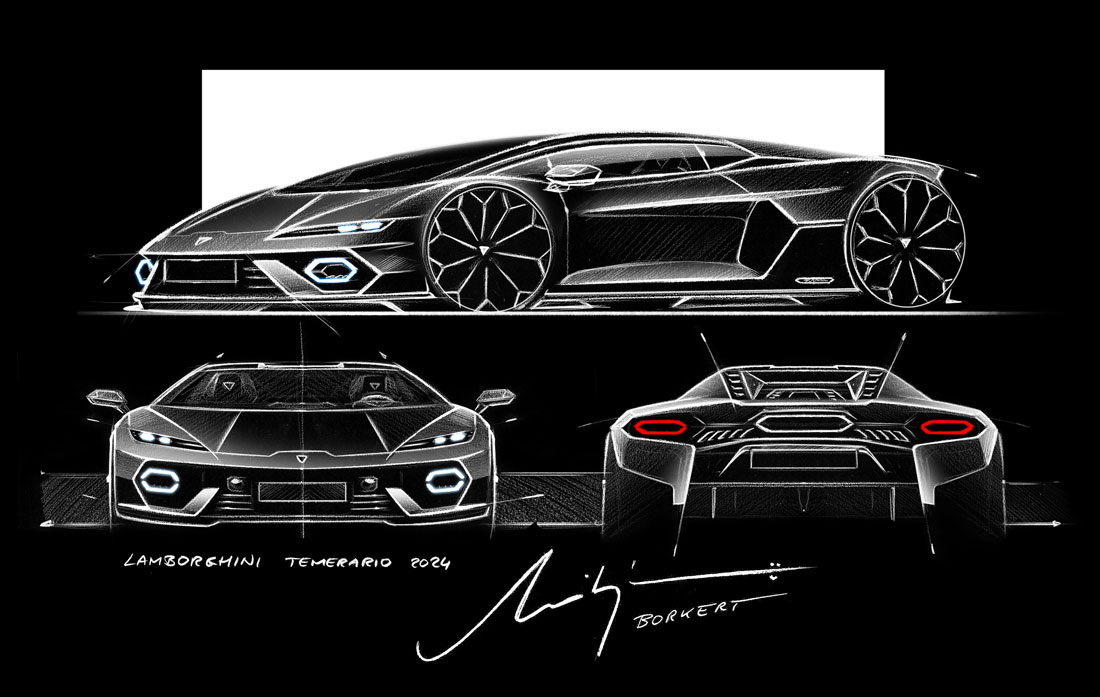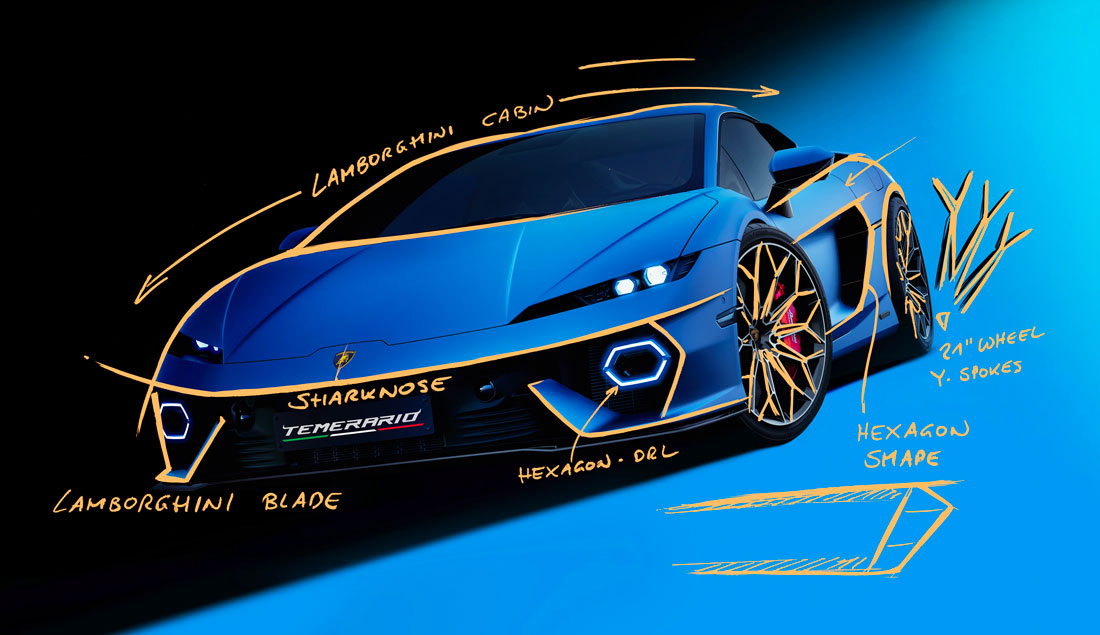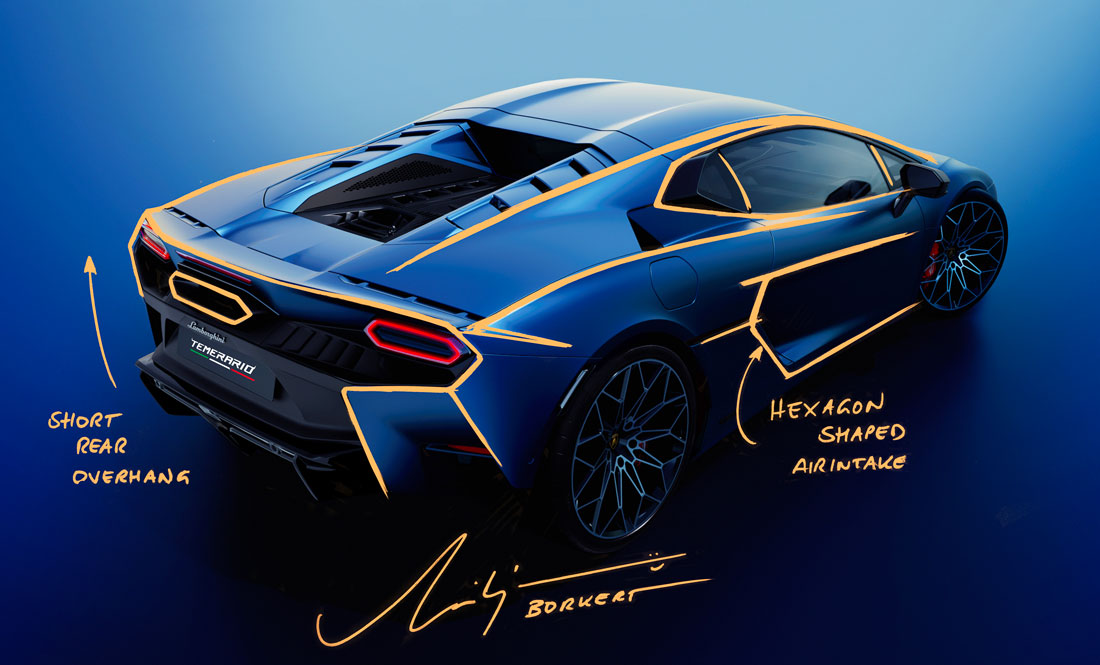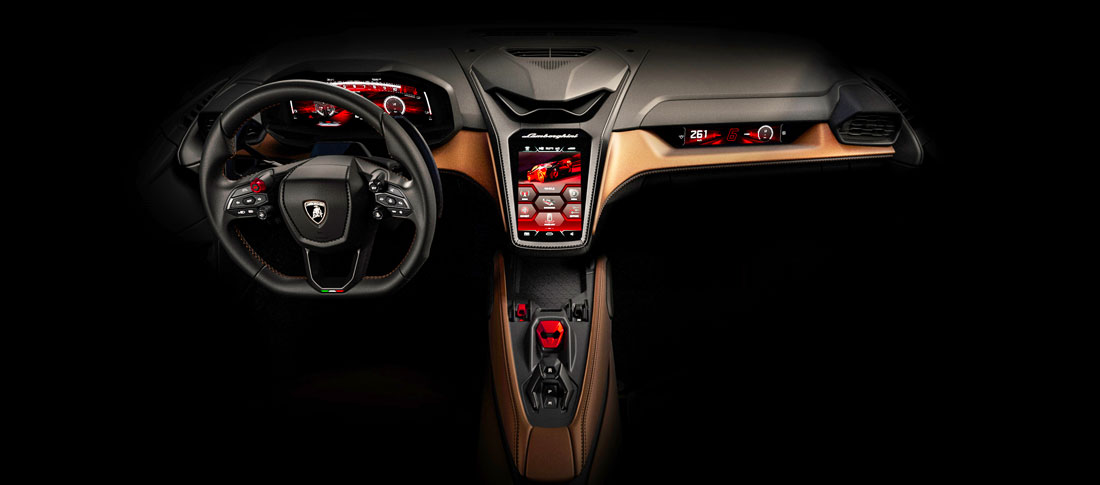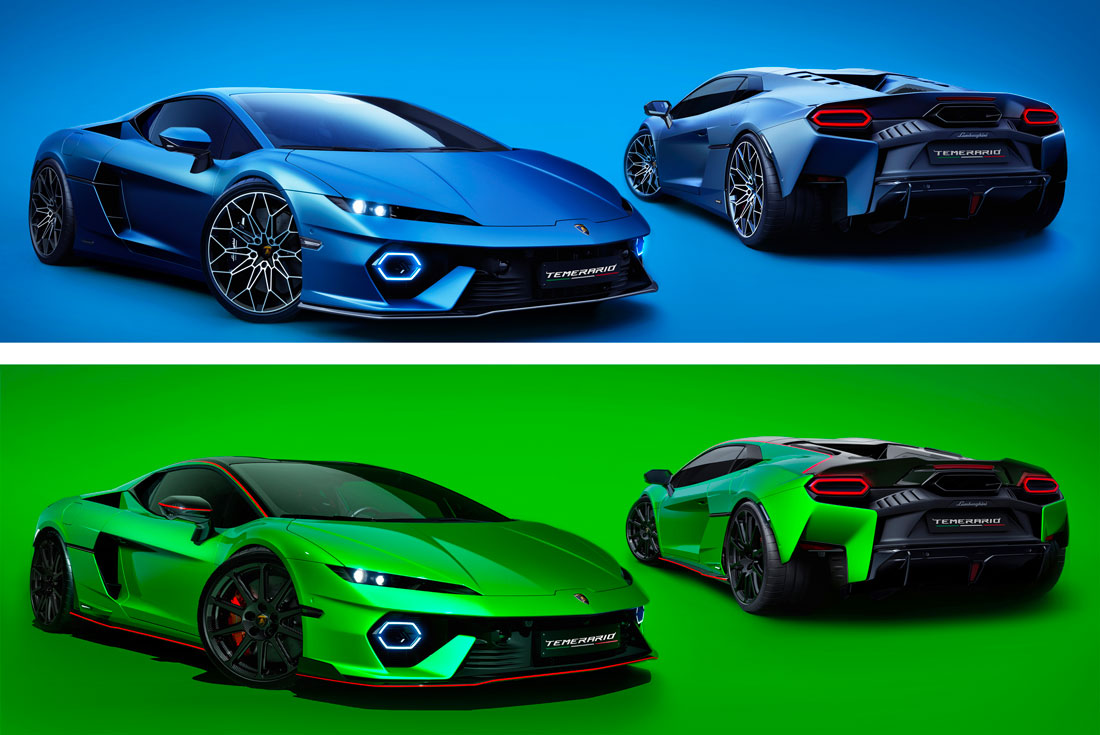“We are here to turn dreams into reality and light up the senses: we give adrenaline a shape”. Visiting the Centro Stile Lamborghini is always an exhilarating experience, and Mitja Borkert’s passion is as contagious as ever. He welcomes us into the presentation room to tell us the origins of the Temerario go way back to 2016, the year Borkert took the helm at Lamborghini Design.
The origins
The first project he worked on with his team, he says, was the Revuelto, Lamborghini’s flagship V12: “We also had to think about the successor to the smaller Huracán, however. It was important to make sure the two cars were clearly distinguished, starting above all with the wheelbase that gives rise to the size impression we defined with our engineers. At the time the Temerario did not yet have a name and the design was unfinished, but we developed a mock-up that was always close to the emerging Revuelto”.
A new design language
Two supercars with separate missions, one following in the footsteps of the Countach, Diablo, Murcielago and Aventador, the other ‘younger’ one, heir to the Gallardo and Huracán, but this time “Lamborghini down to the last screw”, says Borkert. The Temerario is in fact built on a new high-strength aluminium spaceframe. A new design language was therefore needed for a car created from scratch, “but it had to be unmistakable”, Borkert points out. “I have adhered to one core principle since I first set foot in the company: every Lamborghini must be immediately recognisable as a “Lambo” and incorporate the brand’s DNA, but it must also deliver the unexpected.
Symbolic motifs: the hexagon and the Y
Lamborghini’s legacy of mid-rear-engined super sports cars is deeply embedded in the brand’s DNA. Proportions remain paramount as always, with the Countach silhouette – wedge-shaped, peaking at the centre – serving as a foundation for striking graphics. Notably it is the hexagon that emerges as a recurring motif, featuring prominently in the tail lights and exhaust outlets. The hexagon is one of the most symbolic and enduring symbols of Lamborghini design, its origin being traceable to the Marzal concept. Over time, it has evolved into the Y-shaped symbol seen in many of the brand’s recent models. One example is in the Revuelto headlights.
“Feel like a Pilot”
The interior slots into the Revuelto’s ‘Feel like a Pilot’ philosophy, designed with great attention to roominess, particularly headroom: “It’s a sports car that can also be driven on the track with a helmet on, a crucial point because the designers are always looking to make a Lamborghini as low as possible. So we scaled up all the proportions so as to raise the roof and achieve the perfect Temerario”.
A range of over 400 colours
The sitting position is nevertheless decidedly low, in an environment characterised by a light dashboard embellished with iconic elements. Once again, the hexagon predominates, from the controls to the air vents. No less important is the contribution of the Art & Colour Atelier, the style centre department that deals with materials and colours. And speaking of colour, the Ad Personam programme offers over 400 of them. “We are the wizards of colour”, jokes Borkert, who with his team also likes to rummage around in other areas when the opportunity presents itself. Lamborghini has grown a lot in the last twenty years, there are prestigious partnerships such as the Lamborghini 63 yacht made with Tecnomar and the Ducati Streetfighter V4 Lamborghini motorbike.
(Full article in A&D no. 269)

